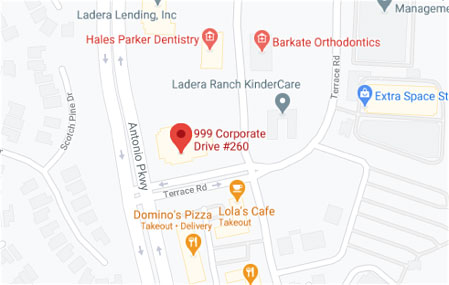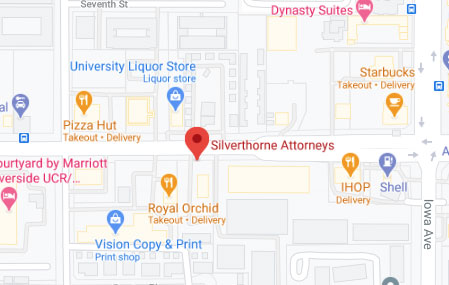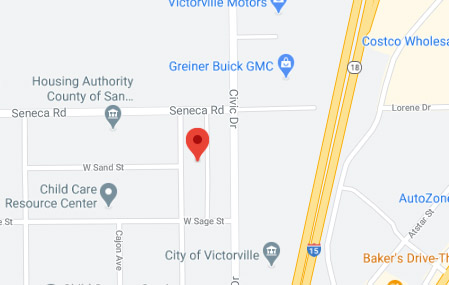At any given time a dog can be aggressive. Dog-on-dog aggression is very common. Oftentimes dogs will become aggressive with other dogs because they are being territorial. Some dogs attack because they lack socialization and have jealously issues. Most animals are territorial and when they feel that any dog or person is violating their personal space, they can attack. While most states have a one-bite rule when it comes to dog attacks, they also have a common law against dog owner negligence.
My Dog Attacked Another Dog, What is Going to Happen?
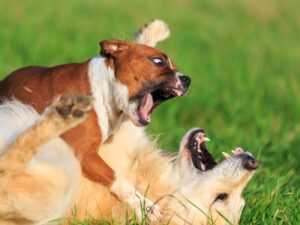 Negligence is the first thing an accident attorney looks at in this case. When a dog causes injury to another dog, the negligent dog owner has breached their duty of care. This means that they are liable for the dog’s injuries and any other resulting damages.
Negligence is the first thing an accident attorney looks at in this case. When a dog causes injury to another dog, the negligent dog owner has breached their duty of care. This means that they are liable for the dog’s injuries and any other resulting damages.
When it comes to a dog attacking another dog, damages include reimbursement for vet bills, dog medications, kennel fees while the dog is recovering, etc.
In certain cases of fatal dog attacks, damages may further include the replacement cost of the deceased dog. Unfortunately, liability does not extend to the mental anguish or emotional distress that someone goes through when they lose their dog in an animal attack.
Who is at Fault | Proving Negligence From The Dog Owner
One of the challenges that any personal injury attorney faces in these cases is proving that another dog began the attack. as dog-on-dog attacks can sometimes be difficult to figure out, especially if an attack seems to come out of nowhere. This oftentimes happens when two dogs are posing by one another. and in a split second, they can be barking and subsequently fighting.
Determining which dog was the one to lunge first will come down to what each dog owner says. A “he-said-she-said” situation. When taking a closer look at the underlying issues, even in cases where the dog is on a leash, you will still be able to recover damages.
Proving the Dog Owner was Negligent
To prove the dog owner was negligent, you must be able to show that they breached a duty of care owed to you. If a judge or jury finds that a dog owner breached their duty of care and if it led directly to some injury for which you had an actionable claim then you have proven that the dog owner is liable for injuries caused by their dog.
The Issue of the Owner’s Carelessness
When a dog bites a person or another dog it is almost always because of the actions or inaction of its owner. The owner may have been negligent in controlling, confining, or caring for the dog, but this negligence does not fully address whose carelessness was more responsible for your injury. For a victim to recover damages from the dog owner, they must prove that the defendant breached their duty of care by not controlling the dog.
Increasing Number of Dog Attacks in California
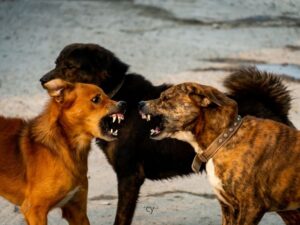 The popularity of dogs is on the rise, but with this increase in population comes an unfortunate side effect: an increasing number of dog-on-dog attacks. According to the Centers for Disease Control and Prevention, 4.5 million people are bitten by dogs each year in the United States, with 75 percent of these bites occurring among children.
The popularity of dogs is on the rise, but with this increase in population comes an unfortunate side effect: an increasing number of dog-on-dog attacks. According to the Centers for Disease Control and Prevention, 4.5 million people are bitten by dogs each year in the United States, with 75 percent of these bites occurring among children.
A majority of dog attacks involve smaller breeds, but larger dogs do attack more often than their size would suggest. Pit bulls top this list at number one for many years and were responsible for the majority of severe and fatal attacks. Fortunately, this breed is slowly falling out of favor, but it still remains on the top ten list for attacking other dogs.
Grooming your dog at home can become dangerous as well if you don’t follow all the proper procedures to stay safe. When not groomed correctly at home by a professional with training and tools, dogs can bite and seriously injure people.
Warning Signs All Dog Owners Should Pay Attention To
There are clear warning signs that can be used to determine whether or not a dog will pose a threat to public safety.
The 9 traits listed below are what the American Kennel Club calls “General Observations” of dogs that have been deemed dangerous. Using this information, residents can be better informed about the dogs they encounter.
- A large dog with a short coat and weight of over 100 pounds is more likely to be aggressive than a small or medium-sized dog.
- A dog that is perceived to be mean, unfriendly, or frightening by appearance is more likely to behave in a similar fashion.
- An adult dog of either sex that has not been spayed or neutered tends to be more aggressive than one that has been altered.
- The “protective type” that is highly suspicious of strangers and may be overly protective of his or her owners, family, or property can pose a threat to public safety.
- Dogs that are chained in the back yard, constantly tethered out-of-doors, kept locked in a garage, or have never been socialized with people and other animals are more likely to attack.
- Dogs that have been abused, neglected, or in isolated environments for an extended period of time also pose a higher risk. Such dogs may be anxious and unpredictable in the presence of humans.
- A dog’s breed can be a factor, but it is said not to be as important as the presence of certain traits.
- The age of the dog may be an indication as well. An older, fully mature animal is generally less aggressive and poses less of a threat than a young, untrained animal of the same breed.
- The dog’s past history is another important consideration. A dog with a known propensity to attack without provocation has been proven to be more dangerous than a dog with no such record.
Filing a Homeowners Insurance Claim
When you are defending another dog, you must get in touch with your insurance company right away. Confirm your pet’s name and contact information, as well as the names and policy numbers of its owner’s insurance coverage. Dogs’ injuries and property damage are generally covered by a pet owner’s insurance. If he or she is unable to leave due to a policyholder’s negligence, the pet owner can file a claim to be reimbursed for veterinary bills, boarding fees, and other associated costs.
Most homeowners insurance policyholders’ pets are fully covered by their homeowner’s insurance policies. However, many types of dog breeds are not allowed under most homeowners insurance policies because they are considered dangerous dogs. “Dogs categorized as Dangerous Dogs include American Pit Bull Terriers, American Staffordshire Terriers, Staffordshire Bull Terriers, Rottweilers, and any dog displaying the majority of physical traits of any one or more of these breeds.”
In some cases, a dog who is not a purebred recognized by the American Kennel Club as being a member of a certain breed may still be classified as dangerous. Even if your insurance policy provides coverage for your pet, you may have to pay an additional premium or deposit fee to be insured against damages they might cause.
Finding Evidence to Support Your Claim
The credibility of a dangerous dog’s owner can be called into question. A veterinarian’s opinion, expert testimony from a canine behaviorist, and other evidence might have an impact on your case. Photographs and videos are valuable pieces of evidence. Take careful notice of any swelling or damage to your dog’s skin. If you’re able, take pictures and video of your dog’s injuries and any nearby objects that may have been damaged by the other dog, such as fences and windows. Assistance from an attorney is recommended in this case; they will be able to help you build a solid case against the insurance company or find evidence to support your claim.
Can Dogs Be Traumatised After a Dog Attack?
Yes, dogs may suffer trauma from attacks from another dog. In addition to physical scarring from wounds they’re getting, the dog can also be physically scarred by the trauma they suffered from the dog attack. You must look to see how the animal is behaving. The emotions that can occur in your pet immediately after the dog attack can vary and you could feel your animal’s body shaking from increased adrenaline that is flowing into the body. The dog may also urinate or defecate.
A traumatized pet doesn’t mean that they’ll all of a sudden become aggressive themselves, it simply means that behavior could change for some time after the dog attack. You should be prepared to see a lot of changes in your animal’s mood and actions. They might also not want to go outside, not eat or drink. They could become both stressed and depressed after the dog attack by another canine.
What Dog Owners Need To Do If Their Dog Was Attacked
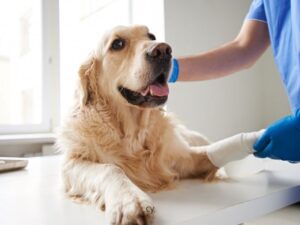 If your dog was seriously injured by another dog, you need to take him to the vet immediately.
If your dog was seriously injured by another dog, you need to take him to the vet immediately.
But how can you tell if your dog has a serious injury after a dog fight and needs medical treatment?
This can be a difficult question, even for a vet. At the emergency clinic, the veterinarian sees any number of dogs who have been in fights – from serious injuries to owner exaggeration of trivial scrapes and cuts.
Luckily some signs may indicate your dog is seriously injured and needs immediate medical attention.
Here are some questions to ask yourself when taking your injured dog to the vet:
- Is your dog acting lethargic, off-balance, or showing signs of pain?
- Is your dog’s nose swollen? (This can indicate a fracture of the nasal bones.)
- Are there puncture wounds on his skin that have broken it and may be indicating an internal injury.
- How is your dog breathing? Is he gasping for breath? If so, these can indicate broken ribs.
- Is there any blood from the mouth or nose? This can indicate a fractured skull or other head injuries.
- Are there unexplained seizures? These can indicate possible brain damage.
How to prevent dog attacks from another dog?
In order to prevent your dog from attacking or being attacked by another dog, you should learn as much as possible about the normal behavior of your dog.
Assertive dogs may mistake a more passive dog as being weak and may try to dominate them, which is why it’s important for all pet owners to be able to recognize warning signs before an attack occurs and what they can do to prevent this from happening.
What to Look for in Dog-on-Dog Aggression
What to do when your dog bites another dog? in this example, we are going to use a pug and a German Shepherd. You might be able to use a partial basis of your claim on the size comparison, weight, etc. It is a good idea to ask the neighbors if they experience any problems with the at-fault dog. Did he bite other neighbors or their children or pets? Has your city’s animal contain issued citations or warnings about the violent nature of the animal?
If the answer to any of those questions is “yes,” then you have a legitimate claim for personal injury and property damage. Property damage being damages to your dog in an attack.
Negligence on behalf of the dog owner that results to harm to another will be much easier to prove. Failing to protect others (including other dogs) from an attack by an unconfined dog, is, in and of itself, negligent.
That being said, if your dog does bite another dog, it is likely that it will be your responsibility to pay for all damages. The state of California is a strict liability state. This means that if your dog bites another dog, animal, or person, generally you are responsible for paying the vet bills and any other necessary damages to the owner of the animal that was bitten.
On the other hand, if you have been injured in a dog attack, you have rights. Contact the dog bite lawyers at Silverthorne Attorneys today to discuss your case.









